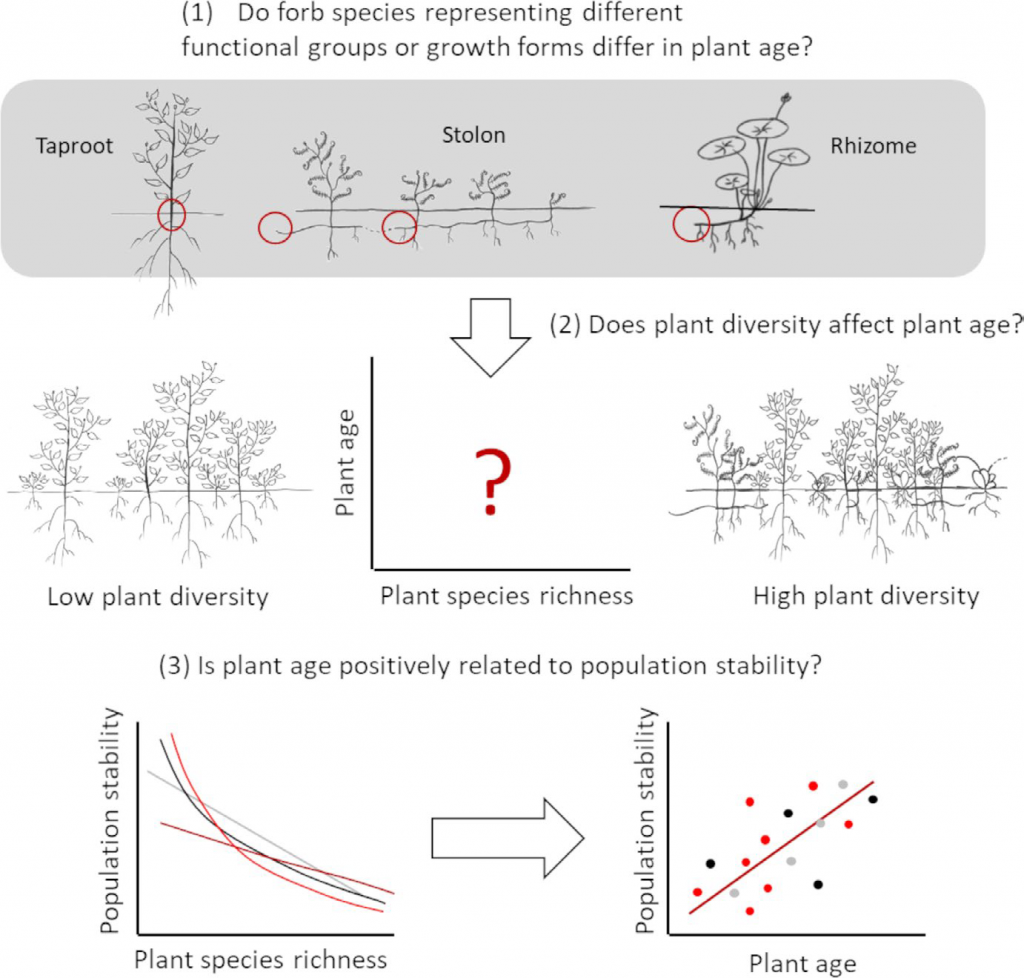New publication from Roeder et al. in Journal of Ecology: Plant diversity effects on plant longevity and their relationships to population stability in experimental grasslands
Identifying to what degree inherent characteristics of plant species and their variation in response to their environment regulate the temporal stability of plant populations is important to understand patterns of species coexistence and the stability of ecosystems. Longevity is a key characteristic of plant life history and an important component of demographic storage, but age is usually unknown for herbaceous species.
In a 12-year-old biodiversity experiment (Jena Experiment) comprising 80 grassland communities with six levels of plant species richness (1, 2, 4, 8, 16 and 60 species) and four levels of functional groups richness (1, 2, 3 and 4 functional groups), we studied populations of 38 dicotyledonous forb species (N = 1,683 plant individuals). The sampled individuals represented three plant functional groups (legumes, small herbs and tall herbs) and two different growth forms (species with long-lived primary roots and clonal species with rhizomes/stolons). We assessed the age of plant individuals by means of growth ring analysis and related the age of plant populations to their temporal stability in terms of peak biomass production.

On average, plant species richness did not affect the mean age of the populations or the maximum age of individuals found in a population. Age of herbs with taproots increased and age of herbs with clonal growth decreased with increasing species richness, cancelling out each other when growth forms were analysed together. Mean population age was lowest for small herbs and highest for tall herbs, while legumes had an intermediate population age. Herbs with a taproot were on average older than herbs with a rhizome. Across all species-richness levels, populations with older individuals were more stable in terms of biomass production over time.
Synthesis. Our study shows for the first time across multiple species that the longevity of forbs is affected by the diversity of the surrounding plant community, and that plant longevity as an important component of demographic storage increases the temporal stability of populations of grassland forb species.
Reference:
Roeder, A, Schweingruber, FH, Ebeling, A, Eisenhauer, N, Fischer, M, Roscher, C. Plant diversity effects on plant longevity and their relationships to population stability in experimental grasslands. J Ecol. 2021; 00: 1– 14. https://doi.org/10.1111/1365-2745.13661



